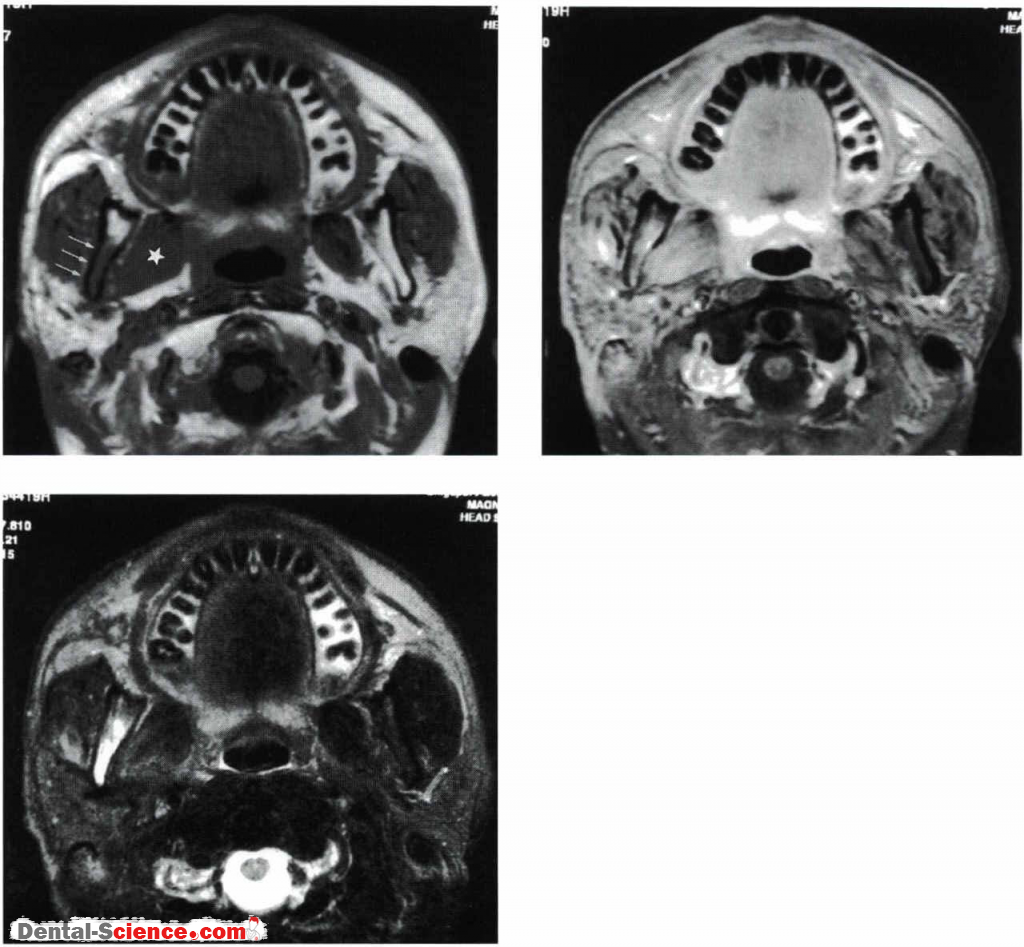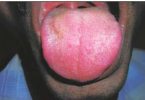Masticator Muscle Tumor Infiltration
Epidemiology
- Malignancies originating in spaces and structures adjacent to the masticator space can involve the masticator muscles.
- Nasopharyngeal carcinoma frequently spreads into the masticator space to involve principally the medial pterygoid muscle.
- Tonsillar carcinoma or neoplasms arising from the mandible can also infiltrate the medial pterygoid muscle. .
Clinical Findings
- At presentation, the symptoms and signs of masticator muscle infiltration are frequently overshadowed by the primary tumor.
- However, on questioning, a history of trismus can be elicited.
- Clinical examination may also show varying degrees of limited mandibular excursion.
Pathology
- In most cases, malignant infiltration is confined to the muscle adjacent to the primary tumor.
- However, neoplastic infiltrates may spread farther afield to involve the muscle in a permeative way.
- In some patients, involvement of muscle bundles leads to tumor spread along the mandibular nerve resulting in proximal extension through the foramen ovale.
- Squamous cell carcinomas and adenocystic carcinomas have a propensity to spread in this manner.
Treatment
- The primary tumor is treated using established surgical principles of wide excision.
- This is supplemented with radiation therapy especially when there is doubt concerning completeness of extirpation.
- Some tumors such as nasopharyngeal carcinoma can be treated entirely with radiation therapy.
Imaging Findings
CT
- Contrast-enhanced CT shows tumor within the involved muscle (usually the medial pterygoid muscle).
- The demarcation between muscle and tumor may be well defined.
- However. in some patients, there may be a diffuse increase in muscle bulk indicating permeative spread.
- Involvement of the medial pterygoid muscle may lead to the involvement of the lateral pterygoid muscle via the common insertion to the pterygoid process
MR
- Contrast-enhanced MR imaging shows increased signals of the tumor tissue within the affected muscle bundle.
- The tumor-muscle demarcation is usually well defined.
- On T2-weighted images, there is good separation between high signal intensity tumor and low signal intensity normal muscle
Imaging Pearls
• Perineural infiltration of the mandibular nerve frequently results in enhancement of the muscles of mastication. This may be associated with high signal intensity on T2- weigh red images involving the entire muscle bundle. Denervation atrophy, as the name suggests, results in a decrease in muscle bulk, whereas malignant infiltration results in increased muscle bundle size.
ــــــــــــــــــــ► ⒹⒺⓃⓉⒶⓁ–ⓈⒸⒾⒺⓝⓒⒺ ◄ــــــــــــــــــــ








